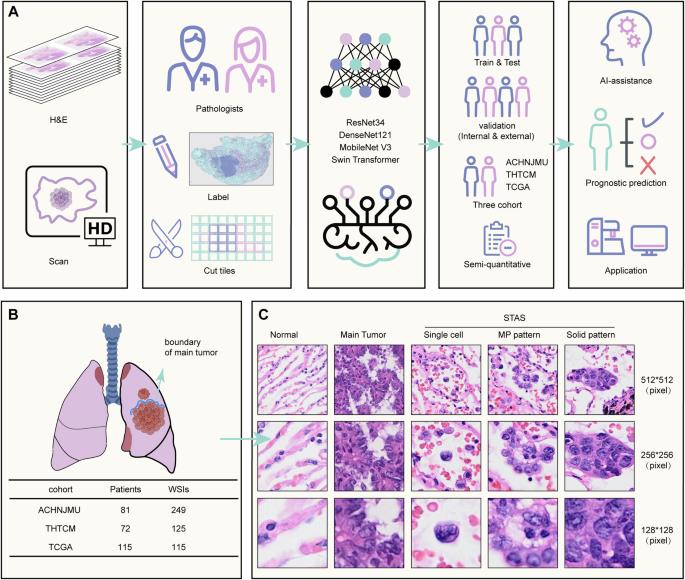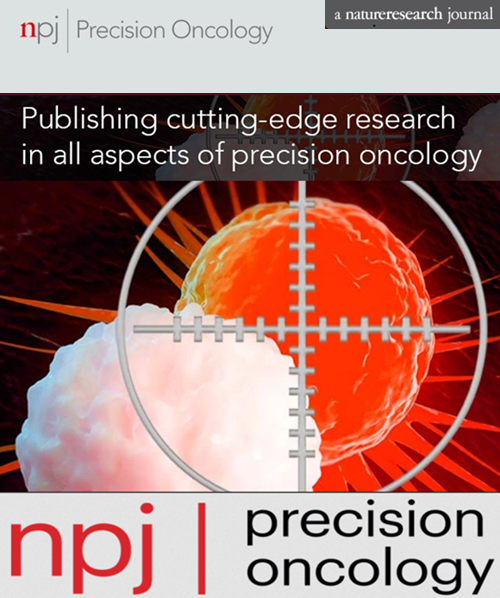Deep learning-based detection and semi-quantitative model for spread through air spaces (STAS) in lung adenocarcinoma
IF 6.8
1区 医学
Q1 ONCOLOGY
引用次数: 0
Abstract
Tumor spread through air spaces (STAS) is a distinctive metastatic pattern affecting prognosis in lung adenocarcinoma (LUAD) patients. Several challenges are associated with STAS detection, including misdetection, low interobserver agreement, and lack of quantitative analysis. In this research, a total of 489 digital whole slide images (WSIs) were collected. The deep learning-based STAS detection model, named STASNet, was constructed to calculate semi-quantitative parameters associated with STAS density and distance. STASNet demonstrated an accuracy of 0.93 for STAS detection at the tiles level and had an AUC of 0.72–0.78 for determining the STAS status at the WSI level. Among the semi-quantitative parameters, T10S, combined with the spatial location information, significantly stratified stage I LUAD patients on disease-free survival. Additionally, STASNet was deployed into a real-time pathological diagnostic environment, which boosted the STAS detection rate and led to the identification of three easily misidentified types of occult STAS.


基于深度学习的肺腺癌气隙扩散(STAS)检测与半定量模型。
肿瘤通过气隙扩散(STAS)是一种影响肺腺癌(LUAD)患者预后的独特转移模式。STAS的检测面临着一些挑战,包括误检、观察者间一致性低以及缺乏定量分析。本研究共收集了 489 张数字全切片图像(WSI)。基于深度学习的STAS检测模型被命名为STASNet,用于计算与STAS密度和距离相关的半定量参数。STASNet 在瓦片层面的 STAS 检测准确率为 0.93,在 WSI 层面确定 STAS 状态的 AUC 为 0.72-0.78。在半定量参数中,T10S与空间位置信息相结合,可显著对I期LUAD患者的无病生存期进行分层。此外,STASNet 被部署到实时病理诊断环境中,提高了 STAS 的检出率,并发现了三种容易被误诊的隐匿性 STAS。
本文章由计算机程序翻译,如有差异,请以英文原文为准。
求助全文
约1分钟内获得全文
求助全文
来源期刊

NPJ Precision Oncology
ONCOLOGY-
CiteScore
9.90
自引率
1.30%
发文量
87
审稿时长
18 weeks
期刊介绍:
Online-only and open access, npj Precision Oncology is an international, peer-reviewed journal dedicated to showcasing cutting-edge scientific research in all facets of precision oncology, spanning from fundamental science to translational applications and clinical medicine.
文献相关原料
| 公司名称 | 产品信息 | 采购帮参考价格 |
|---|
 求助内容:
求助内容: 应助结果提醒方式:
应助结果提醒方式:


